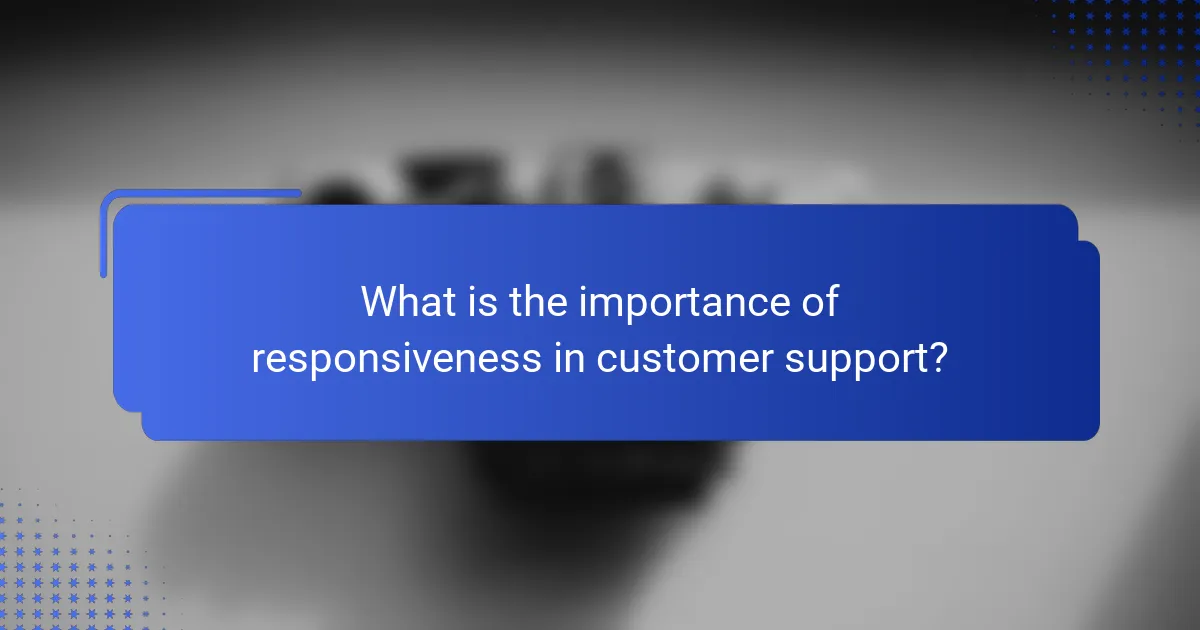For remote teams in the UK, a variety of customer support options are available to facilitate effective communication and assistance. Utilizing software features can streamline processes and improve response times, while a responsive support team is essential for addressing customer inquiries promptly, ultimately enhancing satisfaction and retention rates.

What customer support options are available for remote teams in the UK?
Remote teams in the UK have several customer support options to ensure effective communication and assistance. These include live chat, email, phone support, helpdesk software, and social media channels, each catering to different needs and preferences.
Live chat support
Live chat support allows customers to interact with support agents in real-time through a website or app. This option is beneficial for quick inquiries, as response times are often within seconds to a couple of minutes.
Consider implementing live chat if your team handles a high volume of inquiries that require immediate attention. Ensure your agents are trained to provide concise and helpful responses to maximize customer satisfaction.
Email support
Email support is a traditional yet effective method for customer assistance, allowing customers to send detailed inquiries at their convenience. Response times can vary, typically ranging from a few hours to a couple of days, depending on the team’s workload.
To enhance email support, establish clear guidelines for response times and ensure that agents are equipped to handle common issues efficiently. Using templates for frequently asked questions can streamline the process.
Phone support
Phone support provides a personal touch, allowing customers to speak directly with a representative. This method is ideal for complex issues that require in-depth discussion, though wait times can vary significantly.
When offering phone support, consider implementing a call-back system to reduce wait times and improve customer experience. Ensure your team is well-versed in the products or services to provide accurate assistance.
Helpdesk software
Helpdesk software centralizes customer support requests, allowing teams to track, manage, and resolve issues efficiently. This software typically includes features like ticketing systems, knowledge bases, and reporting tools.
Choose helpdesk software that integrates well with your existing tools and offers scalability as your team grows. Training your staff on the software’s functionalities can lead to improved response times and customer satisfaction.
Social media support
Social media support leverages platforms like Twitter, Facebook, and Instagram to engage with customers. This method is increasingly popular, as many customers prefer reaching out through channels they already use.
To effectively manage social media support, monitor your channels regularly and respond promptly to inquiries. Establish a clear strategy for handling both positive and negative feedback to maintain your brand’s reputation.

How do software features enhance customer support?
Software features significantly enhance customer support by streamlining processes, improving response times, and providing comprehensive resources. Effective tools can automate tasks, centralize information, and enable communication across various channels, ultimately leading to better customer satisfaction.
Automated ticketing systems
Automated ticketing systems help manage customer inquiries efficiently by categorizing and prioritizing requests. This ensures that urgent issues are addressed promptly while allowing support teams to focus on more complex problems. For example, a system can automatically assign tickets based on predefined criteria, reducing response times to low tens of minutes.
When implementing an automated ticketing system, consider integration with existing software to maintain a seamless workflow. Common pitfalls include overcomplicating the ticketing process or failing to customize the system to meet specific team needs.
Knowledge base integration
Integrating a knowledge base into customer support software provides customers with self-service options to find answers quickly. A well-structured knowledge base can reduce the volume of incoming tickets by allowing users to resolve common issues independently. For instance, FAQs and troubleshooting guides can empower customers to solve problems without direct support intervention.
To maximize the effectiveness of a knowledge base, ensure it is regularly updated and easy to navigate. Avoid creating overly technical content that may confuse users; instead, focus on clear, concise language that addresses common concerns.
Multi-channel support
Multi-channel support allows customers to reach out through various platforms, such as email, chat, social media, and phone. This flexibility enhances customer experience by accommodating preferences, leading to higher satisfaction rates. For example, a customer may prefer to initiate contact via social media but switch to a phone call for more complex issues.
When establishing multi-channel support, ensure that all channels are integrated so that customer interactions are tracked consistently. Common mistakes include neglecting to train staff on all platforms or failing to provide timely responses across channels, which can frustrate customers and diminish trust.

What is the importance of responsiveness in customer support?
Responsiveness in customer support is crucial as it directly affects how quickly and effectively customer inquiries are addressed. A responsive support team can significantly enhance the overall customer experience, leading to higher satisfaction levels and better retention rates.
Impact on customer satisfaction
Quick response times can dramatically improve customer satisfaction. When customers receive timely assistance, they feel valued and understood, which fosters a positive relationship with the brand. Studies indicate that customers expect responses within minutes to a few hours, depending on the channel used.
To enhance satisfaction, businesses should implement multi-channel support options, such as live chat, email, and social media. This allows customers to choose their preferred method of communication, ensuring they receive help in a way that suits them best.
Effect on brand loyalty
Responsiveness plays a vital role in building brand loyalty. When customers consistently receive prompt and effective support, they are more likely to return for future purchases and recommend the brand to others. A loyal customer base can significantly contribute to long-term revenue growth.
To cultivate loyalty, companies should focus on training support staff to handle inquiries efficiently and empathetically. Regularly soliciting feedback and making improvements based on customer input can further strengthen loyalty and trust in the brand.

What criteria should be considered when choosing customer support software?
When selecting customer support software, key criteria include integration capabilities, scalability for remote teams, and reporting and analytics features. These factors ensure that the software meets the specific needs of your organization while enhancing overall efficiency and responsiveness.
Integration capabilities
Integration capabilities refer to how well the customer support software connects with other tools and platforms your business uses. Look for software that can seamlessly integrate with CRM systems, communication tools, and ticketing systems to streamline workflows and improve data sharing.
Consider the ease of integration and the availability of APIs or pre-built connectors. A solution that offers robust integration options can save time and reduce the complexity of managing multiple systems.
Scalability for remote teams
Scalability is crucial for remote teams, as it allows the software to grow alongside your business. Choose a solution that can accommodate an increasing number of users and support higher volumes of customer interactions without compromising performance.
Evaluate whether the software can handle peak times effectively and if it offers flexible pricing plans that align with your team’s growth. A scalable solution will help ensure that your customer support remains efficient as your team expands or adjusts to changing demands.
Reporting and analytics features
Reporting and analytics features provide insights into customer interactions and team performance. Look for software that offers customizable dashboards, real-time reporting, and key performance indicators (KPIs) to track metrics such as response times and customer satisfaction.
Effective reporting tools can help identify trends and areas for improvement, enabling your team to make data-driven decisions. Ensure that the software allows for easy export of reports and integrates with other analytics tools you may be using.

How can customer support responsiveness be measured?
Customer support responsiveness can be measured through various metrics that indicate how quickly and effectively a support team addresses customer inquiries. Key metrics include first response time and resolution time, both of which provide insight into the efficiency of the support process.
First response time
First response time measures how long it takes for a customer to receive an initial reply after submitting a request. This metric is crucial as it reflects the immediacy of support and can significantly impact customer satisfaction. A good benchmark for first response time is typically within a few hours, with many companies aiming for under 30 minutes for urgent issues.
To improve first response time, consider implementing automated responses that acknowledge receipt of inquiries. This not only sets expectations but also reassures customers that their issue is being addressed. Regularly reviewing and optimizing staffing levels during peak hours can also enhance responsiveness.
Resolution time metrics
Resolution time metrics track how long it takes to fully resolve a customer issue from the moment it is reported. This metric is essential for understanding the overall efficiency of the support process and can vary widely depending on the complexity of the issue. For straightforward problems, resolution times may be within hours, while more complex issues could take several days.
To effectively manage resolution times, categorize issues based on complexity and urgency. This allows support teams to prioritize effectively and allocate resources where they are most needed. Additionally, tracking resolution times over time can help identify patterns and areas for improvement, enabling teams to streamline their processes and enhance customer satisfaction.

What are the best practices for remote team customer support?
Effective remote team customer support hinges on regular training, utilizing customer feedback, and maintaining responsiveness. Implementing these best practices ensures that support teams are well-equipped to handle inquiries efficiently and effectively.
Regular training sessions
Regular training sessions are essential for keeping remote customer support teams updated on product knowledge and customer service skills. These sessions can be conducted weekly or bi-weekly, focusing on new features, common customer issues, and effective communication techniques.
Consider incorporating role-playing scenarios during training to simulate real customer interactions. This hands-on approach helps team members practice their responses and improve their problem-solving skills in a low-pressure environment.
Utilizing customer feedback
Utilizing customer feedback is crucial for enhancing remote team customer support. Gathering insights through surveys, follow-up emails, or direct conversations allows teams to identify areas for improvement and adapt their strategies accordingly.
Implement a system to regularly review customer feedback and track trends over time. This can help pinpoint recurring issues and inform training sessions or updates to support resources, ensuring that the team remains responsive to customer needs.

What emerging trends are shaping customer support for remote teams?
Emerging trends in customer support for remote teams focus on enhanced technology integration, personalized service, and increased responsiveness. These trends aim to improve customer satisfaction and streamline support processes in a virtual environment.
Increased use of AI and automation
AI and automation are becoming integral to customer support, allowing remote teams to handle inquiries more efficiently. Chatbots can provide immediate responses to common questions, reducing wait times and freeing up human agents for complex issues.
Consider implementing AI-driven tools that analyze customer interactions to improve service quality. Many organizations report that automating routine tasks can lead to a significant increase in overall productivity.
Focus on omnichannel support
Omnichannel support ensures customers can reach out via multiple platforms, such as email, chat, social media, and phone. This approach allows remote teams to provide a seamless experience, regardless of the channel used.
To effectively implement omnichannel support, ensure that all communication channels are integrated. This way, agents can access the complete customer history, leading to more personalized interactions and quicker resolutions.
Emphasis on data-driven decision making
Data-driven decision making is crucial for optimizing customer support strategies. Remote teams can leverage analytics to identify trends, measure performance, and adjust tactics accordingly.
Utilize customer feedback and support metrics to refine processes. Regularly reviewing data can help in understanding customer needs and improving service delivery, ultimately enhancing satisfaction levels.
Enhanced training and development
As remote work becomes the norm, ongoing training and development for support staff are essential. This ensures that team members are well-equipped with the skills and knowledge needed to address customer concerns effectively.
Consider implementing regular training sessions that focus on both technical skills and soft skills, such as communication and empathy. Investing in employee development can lead to better customer interactions and improved team morale.
